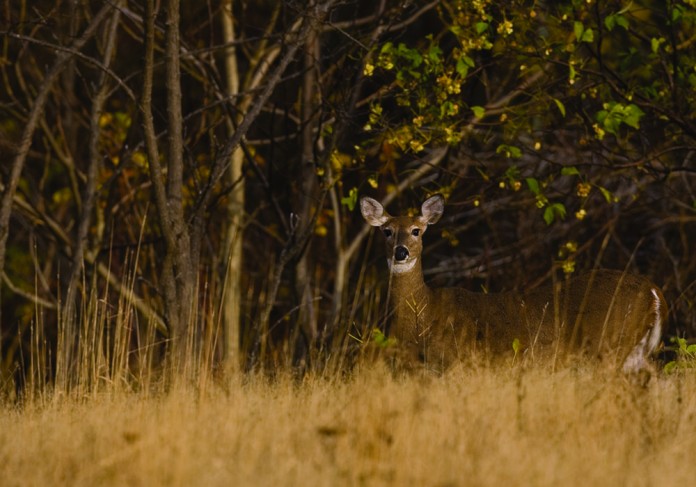Over the last 30 years, deer and raccoons have cost me a small fortune. Though I never intentionally feed these backyard visitors, they’re difficult to discourage.
Deer stand on their hind legs and bat seed from feeders or use their long sticky tongue to empty feeders they can reach. Raccoons knock feeders to the ground and often carry them into the woods. If I find these feeders the following spring, they’re usually in pieces. I estimate that deer and raccoons have cost me at least $1,500 since 1985.
Bird cage
So back in September while attending a trade show, the proverbial light bulb in my mind illuminated when I saw a display of new products. They were hanging on the outside of a large cage of heavy-duty wire mesh panels.
The mesh was about 2 3/4-inches square, and the panels were 2 feet wide and 7 feet tall. Suddenly I imagined this cage in my backyard with all my feeders hanging inside the cage.
The wire mesh wall panels would keep the deer at bay, and if I put panels across the top, the raccoons would also be excluded. After some phone calls and Internet searches, I found these panels available at www.kc-store-fixtures.com in Kansas City.
Project costs
I decided to make my cage 6-by-8 feet and 7 feet tall. That would provide plenty of room to hang feeders from the overhead panels and still allow me to move about inside to fill the feeders.
Building this cage required 14, 2-by-7 foot panels for the walls and three 2-by-8 foot panels for the top. At about $20 per panel plus hardware to clip the panels together, the total cost of materials came to $351.25. Add another $162.90 for shipping, and the total cost came to $514.15.
After recovering from sticker shock, I decided it was a small price to pay to deer proof and raccoon-proof my feeders. So I placed the order. About three weeks later, the panels arrived. The following weekend, my wife helped me assemble the bird cage. I hinged one panel with zip ties to create a door so I could easily get in and out of the cage. It was almost dark when we finished, so I waited until morning to see how long it would take the birds to use the cage.
It works
The next day I was pleasantly surprised to find birds already zipping in and out of the cage. Chickadees and goldfinches flew unimpeded right through the mesh. Titmice, nuthatches, and house finches easily entered after landing on a horizontal wire.
The bird cage has now been up for two weeks, and it works. The deer watch me fill the feeders, but are completely flummoxed. And by hanging each feeder from a hook on a swivel, raccoons are unable to twist feeders off their hooks. Outsmarting raccoons is especially satisfying.
Winning the battle
I hate to be overconfident, but I think I’ve finally won the battle with deer and raccoons. I’m just keeping my fingers crossed that a bear doesn’t find the bird cage before denning for the winter. I’m confident it is not bear proof.
What about squirrels, you ask? Curiously I’ve never had a squirrel problem. Both gray and fox squirrels frequent the yard, but they rarely come to my feeders. I can’t explain that.
But even if they come, they’re welcome. And so are the flying squirrels that inevitably visit every night.
The big question is whether or not the bird cage was worth the investment. To me, it is. No longer will deer empty the sunflower seed feeders in 15 minutes, and expensive feeders will stop disappearing mysteriously at night.
Sitting with birds
I also discovered an unexpected bonus. The cage is big enough to place an old lawn chair inside. Within two minutes of sitting down, I have birds all around me, some just inches away. And when it gets cold, I’ll sit there and have birds perched on my fingertips literally eating sunflower kernels from my outstretched hand. And that is pure magic.













